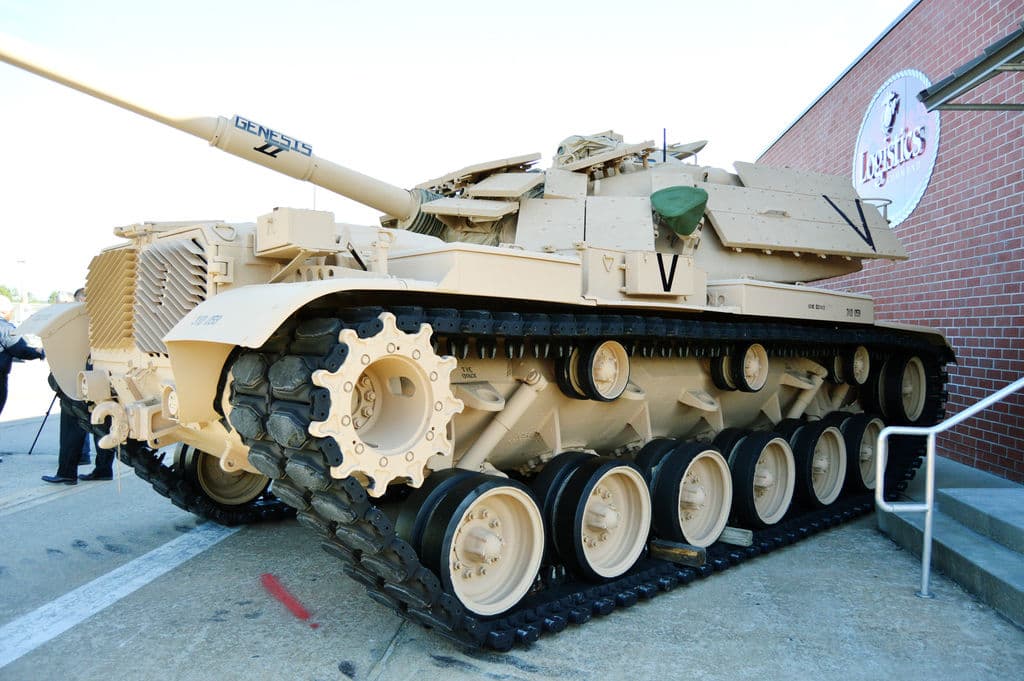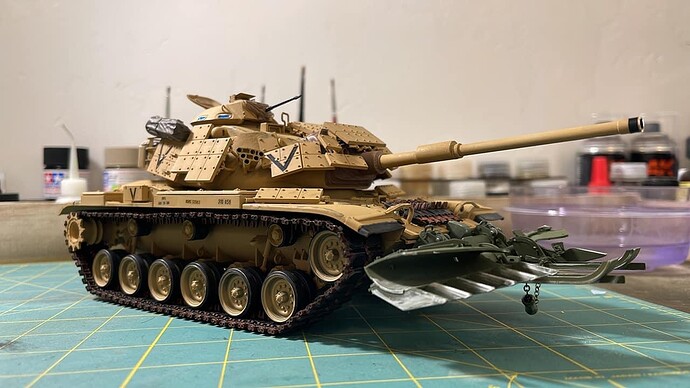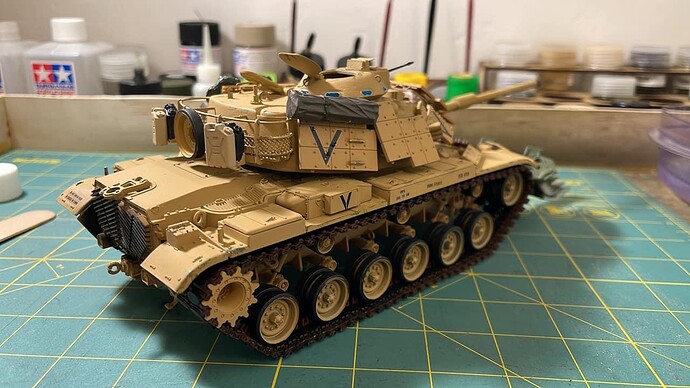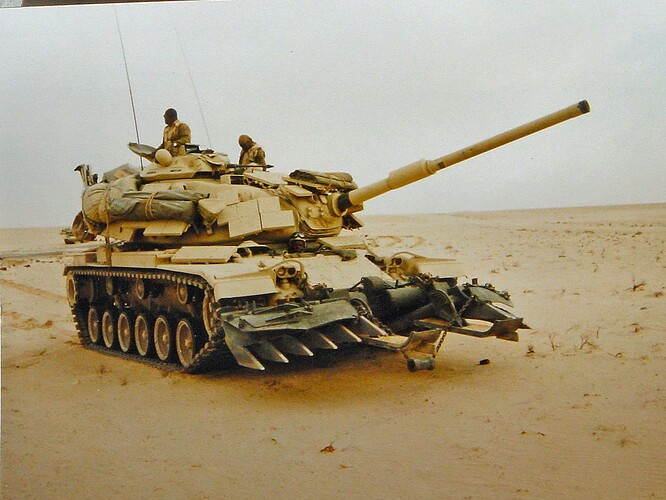I’am attempting to do proper research when I want to start a new scale model project.
But I’m feeling it takes to much to do this.
I’m wondering how much time it actually takes to do the proper research on a topic, before you are able to make it into a good fun and enjoyable project.
It all depends on what you are looking at achieving. Is it a simple build and you are just for info like vehicle markings or in depth info like vehicle movements, what units it was attached to, what type of vehicle, what Mk or variation for a specific time frame etc etc. Research can be as quick as 10 minutes or weeks if its a really in-depth subject. It just depends on what you want from the model really. Also, research may require you asking a lot of questions to people who may not be able to reply straight away so that may add on time as well.
It depends on your intentions with the model.
A straight forward build of the parts and decals provided in the box
OR
a totally authentic model of a specific subject on a specific day,
correct in every detail including the driver/pilot (tall, short, facial expression,
correct clothes et.c). What was the colour of the ropes used to tie down the
tarpaulin. How many bullet holes? Which type of tires and how worn were they,
same tire manufacturer for all wheels?
Correct every minor detail using original manufacturers drawings and a ton of photos
or straight out of the box and ignore any potential flaws (it looks correct when viewed from
one meter distance)?
Research can take no time at all or years, your choice, your ambition.
Isn’t this the same as ‘how long is a piece of string?’
Same answer too.
Mal
Yep,
It is possible to string out the research to months or years,
possible getting oneself tied up in knots by the process.
Sometimes a swift decision is needed to cut the gordian knot
I tend to buy only good kits from manufacturers that I expect have done a fair bit of research themselves.
So, in most cases I get interested in a type of aircraft, I look at Aeroscale for the best model available, buy and build according to instructions. During the build process it is easy enough to find walkarounds, pictures… on the web, and step by step builds on youtube for further info.
When forced to buy a sh!t kit because the subject is interesting, but there is no decent kit available, or it is a vac form that usually comes with very brief instructions, I do a lot of internet searches, buy a photo book …
No offense, but at the stage I perceive you are in your model building, I wouldn’t sweat the small stuff. As others said you can spend weeks or even years researching every detail down to the weather on a specific day. This can be fun and leads to extreme detail.
However, before getting bogged down in such details I think it is important to master the finer points of building. As above I recommended buying kits that are the most accurate representation of the subject of interest. No kit is perfect but early on don’t worry about something like a bolt being out of place. I would focus on making a few kits and picking up a new skill or two on each build.
It’s too easy to get bogged down in the details not actually enjoy the building.
As others have said the amount of research is dependent on what you want to build and your interest level in the subject. For example on my leopard C2 build I had the fortune of actually talking to the guy who commanded the exact tank I am building, this allowed me to research exact colors of things that were hard to find pictures of. My most recent build is a Ki-84. I pulled it off the shelf because I spilled glue on my Jill build. The research on the Ki-84 only went so far as to, hmm it would be cool to do a home island defense B-29 interceptor, which markings are applicable
Then as others said as many photos as possible while building to properly position parts the instructions are vague about.
Anyway good luck and happy building
Like the others said, it all depends on what you want to achieve. Some folks just like to build, and are happy to through together a kit with no research or added parts, and use the markings supplied by the manufacturer, while others go crazy researching an modifying their kits - both approaches are perfectly acceptable. I’ve been doing this for decades and I settled in to what interests me most - building models to replicate a photo. That means spending hours/weeks/months gathering info and accessories before I start the build. But this takes a lot of time, and I do enjoy the actual “build” part of the hobby, so in between these well-researched masterpieces I also build kits that I just like the look of - I build them straight from the box with little or no research just to have fun. The trick is to learn when to switch off the research for a while and build a kit for fun just to “clean the pipes” before all the research saps the fun from your hobby. After all, the thing that unites all of us here is that we enjoy building models!
There’s no end to the amount of research you can do on a modeling subject. I’ve been studying the M551 Sheridan since 1982 and I still haven’t built a satisfactory kit of my favorite “tank”. As others have said more eloquently than myself, too much research and you’ll get bogged down in the details and the hobby becomes less fun and more of a chore. On the other hand researching a subject is half the fun, I can’t tell you how much my knowledge base has increased just from studying WWII history, Vietnam history and so on. As @barkingdigger said, build because you like to build, the rest will fall into place in it’s own time.
Cajun ![]()
Hi Roland;
As pretty much everyone else has mentioned there is no set timeframe or limit for research. My humble suggestions to consider are:
#1: what is your budget? Research materials can very often cost more than the kit you wish to build. Despite what some may think, the internet is NOT a comprehensive encyclopedia!
#2: as others have mentioned, it is SO easy to fall prey to the dreaded “Analysis Paralysis” - the tendency to descend into a doom spiral of always needing more references and information. Personally, I find this scenario absolutely crippling to my enjoyment of the hobby.
#3: as a follow-on to #2, who is your audience? Are you building to go to contests and win “major awards” that you can proudly display on your den walls? Or are you building because you like to build models and are interested in history and technology? The first part likely requires more research, also a high level of skill and facility at model building. Personally speaking I fall into the second part. I like to build, and I share (what little work I get done) here to improve my skills, no more…. I certainly care about accuracy but I care more about my sanity and my level of enjoyment.
#4 make sure you’re having fun, as I assume that’s why we are here ![]()
Jimbo
Take note Roland . . . now THAT is an eloquent reply to your question! Very well said! Hmmm, “analysis paralysis”, I like that term and suffer from it exhaustively, uuggghhh!
Cajun ![]()
As others have said…
But I tend to see a pic & want to model ‘that’ pic, & collect the materials, kit(s), conversions, to techniques necessary… so can be a while.
So you need to ballance enough info to finish the job, vs., well self satisfaction.
No matter what, when you finish a model, ONLY then do you get/stumble across that vital piece of info that would perfect the model. ![]()
Back when trains were my thing, “Analysis paralysis” was better known as AMS - Advanced Modeller Syndrome. It was a truly crippling affliction!
The vehicle your model is to portray is a big factor. Some have tons of data and photos available. Others have very little. You can’t obtain what does not exist. And… you don’t need more data than you intend to build into your model.
I totally agree with the replies. I have an issue where I get stuck on the small stuff which basically re-shelves the kit. Examples
Airfix Fairey Battle - what is the color that is between the pilot and the rear gunner ? There is alot of space between them
Any brand - P-40 - what is the color behind the rear side windows? Interior Green? Camo ? something else
Any brand - Spitfires - what is the color for the wheel wells? Interior Green? Bare Metal ? Same color as the underside Camo.
These are some of the many examples of how much I want to research or no research at all.
Cheers
![]()
![]()
![]()
Several fantastic answers and @Jimbo gave a truly outstanding one.
As to how much research for a given model? It’s however much “time” the modeler wants to invest in a given model project as the deciding factor. Back in the early 1990’s when I cared about “research” for a subject, I liked wanted to do at least 25 hours to 45 hours worth or until materials available were exhausted. Information was more limited in availability ~30 years ago.
As more information became available, I discovered it was possible to spend (waste) an incredible amount of time on research and accomplish nothing toward building the actual model. So Over the years, I began to despise spending time on research for a model. Research is usually precious hobby time spent not building, painting, weathering and finishing the model.
Today my approach to research is pretty simple. Avoiding research greatly improves my enjoyment of the hobby!
-
Only subject matter that gets research time for me - favorite WW2 vehicles. Panzer IV, Panzer III, Stug III, Tiger 1, Panther, T-34, KV & Cromwell. Otherwise, net check to make sure a given kit isn’t a dog and very just basic research on markings before building the kit.
-
Check Perth Military Modelling for reviews, YouTube and a few other sources.
-
Quick internet search focused on this site, missing lynx & track link.
-
If listed in #1, pull my best references and review. Achtung Panzer series, Jentz & Hillary Doyle books, 8 wheels, Spielberger, Ryton plus a few others.
-
If hard core researched from #1, go through kit instructions and write down what’s being changed and where to look in research materials.
Happy modeling! Do what you enjoy in the hobby the most, is best in my opinion.
In my case; i did a lot of research for my Tamiya M60A1 ERA build. Mainly on the tanks of “Task Force Ripper” during Operation Desert Storm.
Task Force Ripper was comprised of elements of the 1st and 2nd Marine Divisions, along with the 4th Marine Division’s 4th Tank battalion and elements of the US Army’s 2nd Armored Division’s “Tiger Brigade” and 3-41st Infantry’s “Straight & Stalwart” Battalion Task Force, under the command of Marine Colonel Carlton W. Fulford Jr.
LTG Carlton W. Fulford Jr.
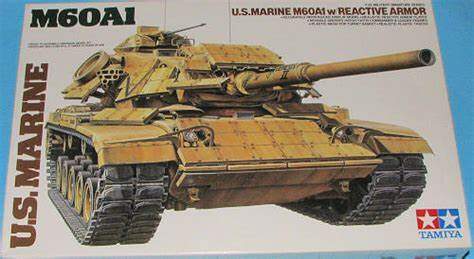
The kit’s box art features one of the tanks of Task Force Ripper; call Sign “Genesis II”; the real tank is on permanent display at the National Museum of the United States Marine Corps in Quantico, Va.
“Genesis II” after restoration, being presented to the National Museum of the Marine Corps at a ceremony at the USMC Depot Maintenance Command - Albany.
While my kit is not of a specific tank, it represents a Marine Tank equipped with a Track Width Mine Plow (TWMP), as seen in action during the war.
I was very pleased with the result of all the research I did and in the end; it’s one of my favorite builds.
There’s simply no definitive answer to this. I’ve spent weeks, months, and in one case for a particular subject, I’ve been researching its details for over 3 decades.
I will say, however, that there does come a point when you just have to go with what you do have if you ever want to actually get any model building done. For instance, my current project was researched for several months, and I answered the major questions that I had about it. However, there are areas of the prototype that there is simply no information for, so if I ever wanted to actually build this model, I had to decide that I had as much as I was going to get. Time to get started on the model.
For some subjects, ones that you’re most interested in, you might build a number of different models of one of those subjects over many years with each new build improving on accuracy and details over the earlier ones. All because you’ve never really stopped researching that subject. At one time I was a huge Tiger and Panther fan-boy, and I’ve built many, many models of each over the years. Every new model of those subjects that I built was (at least in my opinion) better than every earlier one because I kept studying as newer information and references became available.
Finally, there is the Model Researcher’s Corollary to Murphy’s Law which says:
“No matter how much research you do, the final bit of information you needed for the project will only manifest itself when you’ve finished the build.”
So, not only do you need to know when to say you have enough information to go forward, but you also need to learn that you’ll never have all the info that you wished and wanted.
Yes, and all before the nerves get frayed and you lose the thread of sanity…
Frankly I don’t do much research. I may check some photos, ask questions on this forum (you guys are a fount of knowledge and experience) and perhaps some reviews. Reason is two fold, I’d rather spend my time building but mostly it’s due to the fact that in my professional life I spent too much time doing research that it pretty much cured me of the desire to do much more.

